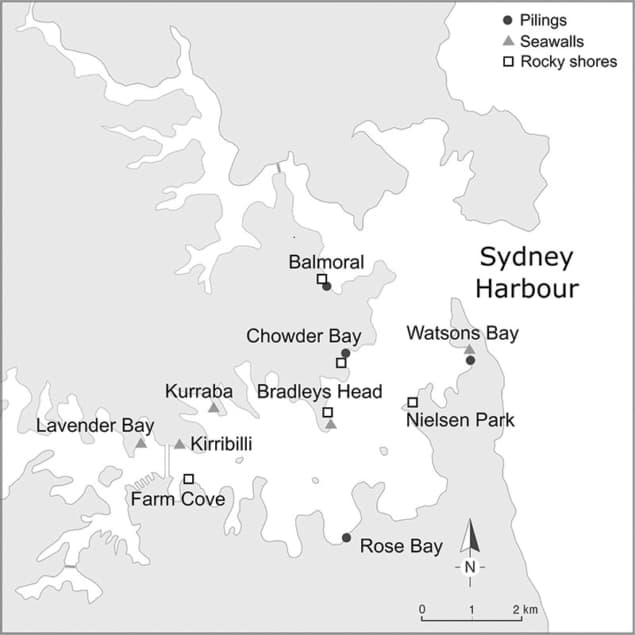
You’ve heard of “urban sprawl” but have you heard of “marine sprawl”? From oil platforms to ports, and offshore wind turbines to sea-walls, the world’s coastal environment is becoming cluttered with man-made infrastructure. New research suggests that marine sprawl may have serious ecological and economic consequences.
Globally, harbour space is growing at 3.7% per year, and offshore wind energy is expanding by nearly 30% per year. From an underwater perspective a plethora of new surfaces is appearing in shallow marine environments. For some species this represents a vast increase in comfortable new homes. For example, recent research has shown that the increase in gas platforms in the Adriatic Sea over the last 50 years has led to a massive rise in moon jellyfish numbers, whose larvae like to situate themselves on overhanging surfaces. But how is this marine sprawl affecting marine ecosystems as a whole?
Mariana Mayer-Pinto from the University of New South Wales, Australia, and her colleagues have assessed the wider impacts of marine sprawl by measuring aspects of ecosystem health such as productivity and filtration rates in one of the largest urbanised estuaries in the world: Sydney Harbour. At 9 different locations, including both natural and man-made habitats, the scientists photographed and collected all organisms within a 10 cm-quadrant. They also measured the filtration rate of oysters in 12 locations, and scraped clean a surface and returned six months later to see how quickly it was recolonised.
In total the team sampled a staggering 16,361 specimens from 112 taxa, discovering significant differences in the structure of intertidal ecosystems in natural and artificial habitats. Natural rocky shores were far more biodiverse, with 26 taxa – approximately one-third of the total found there – unique to the habitat. In particular, the researchers found that rocky shores have 40% more grazers than seawalls, and 70% more grazers than pilings.
Meanwhile, scavengers were around eight times more prolific on seawalls, compared to pilings or rocky habitats, and algae were more diverse on seawalls and rocky shores than on pilings. Oysters were more abundant on pilings than rocky shores, but they were also smaller, perhaps due to regular cleaning of the artificial structures preventing oysters from growing to full size. Surprisingly, filtration rates were similar for oysters in either habitat.
The decrease in diversity observed on manmade habitats supports previous findings, and confirms that manmade habitats alter the balance of ecosystems. “Because these structures tend to be readily colonised by a range of animals and algae, people believe they are surrogates of the natural habitats,” said Mayer-Pinto. “Previous work has shown that they can increase the number of invasive species, which in turn may have serious ecological and economic consequences.”
In addition, the infrastructure itself often displaces a valuable soft-sediment habitat. “These soft-sediment habitats, although often overlooked, provide important services such as nutrient cycling, clean water and carbon storage,” said Mayer-Pinto.
Much more work remains to be done to fully understand the impact of marine sprawl, but it’s clear that marine infrastructure is altering the balance of ecosystems, and that this may have negative consequences.
Mayer-Pinto and colleagues published their results in Environmental Research Letters (ERL) .



